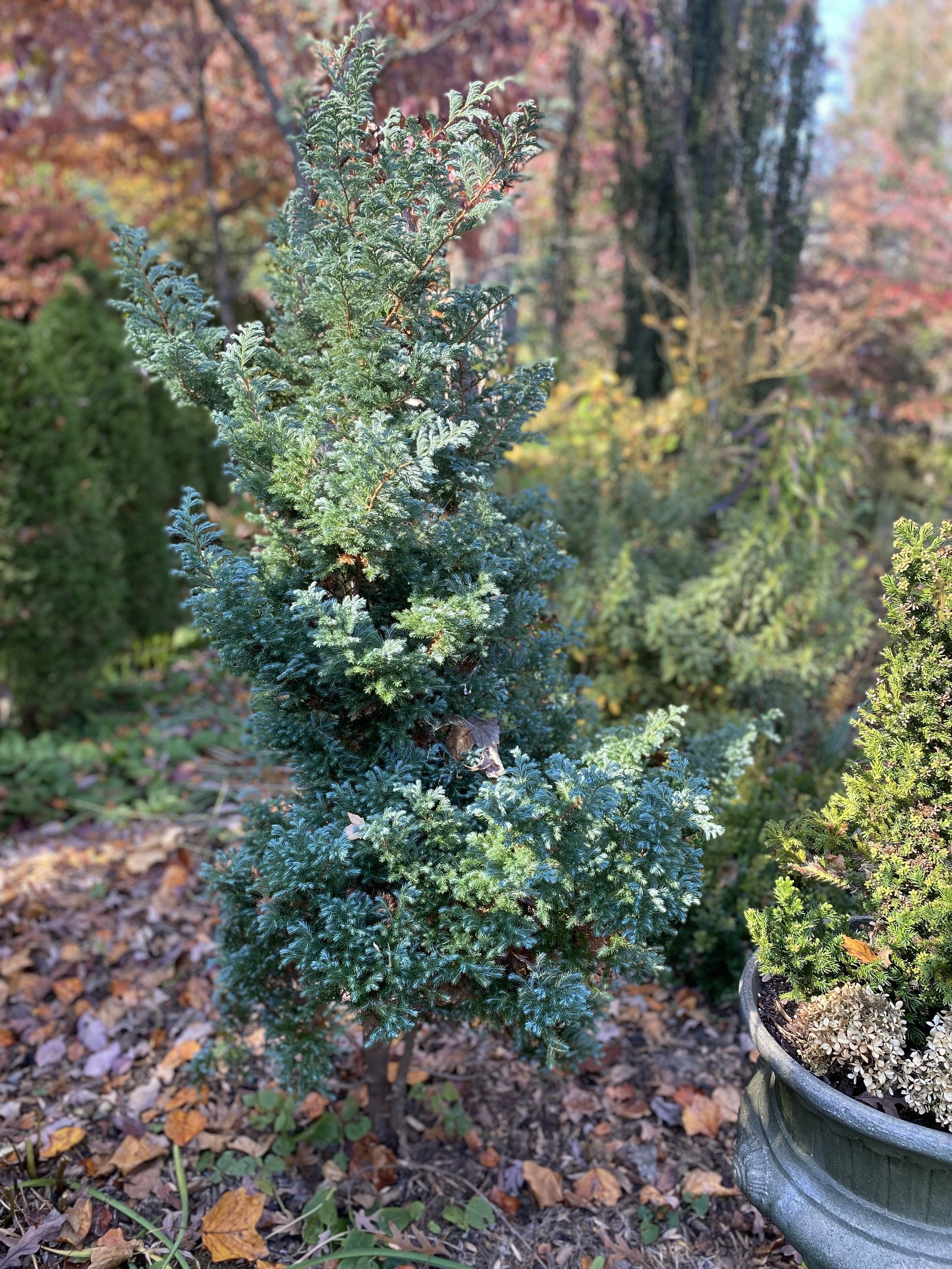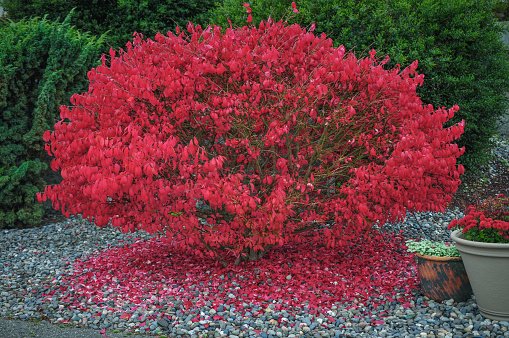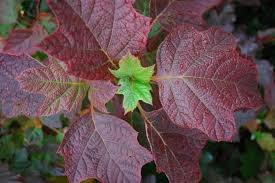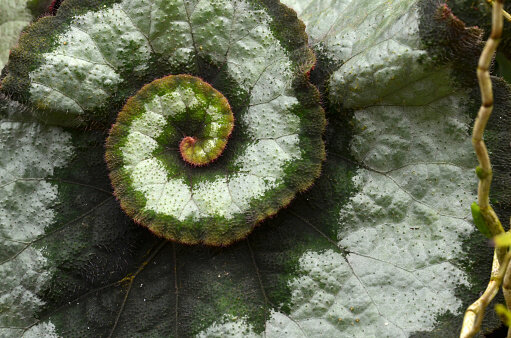I gathered the few Red Twigs I have (remember, it’s a new garden, and I keep sawing on them each winter) to make these foraged arrangements.
Photos courtesy of East Coast Garden Center, Millsboro, DE
This week on Into the Garden with Leslie, I garden-splain about why I whisk away all foliage from the perennial borders at the front of my house. You could say I am “borderline” defensive in my explanation, but perhaps that’s because I am more and more cognizant of how beneficial it is to leave things for winter. So lucky to have a large yard, most of which will be wild and unkempt all winter—some of it all year.
It’s interesting to think of garden maintenance as ‘selfish,’ but I will be true to my aesthetics in the places where it makes me happy. It’s my garden on our planet. I hope you enjoy your garden on our planet the way you want—neatening and fussing a bit, leaving a bit for the birds and other beasties, and never feeling like any chemical is needed to help make it better for you. Because it’s yours, and ours, and it’s theirs (the beasties who wouldn’t want the chems).
Plant of the Week
The Red Twig Dogwood is one of the most Christmas-y of all plants, and now that Thanksgiving is over (9 hours ago as I type this) we are moving on to the next event, people!
This plant is native to much of the US, and it can grow in damp soil, which makes it a great choice for rain gardens created to help with runoff (I should do an episode on those…)
I grow the Cornus sericea, which is lovely in spring, fall, and of course, winter, but it is a bit of a green blob in summer. Four season interest is easy to achieve if you go for the Cornus alba ‘Elegantissima’ or ‘Bailhalo,’ which is pictured at left in tempting four season detail.
This plant is so willing to be propagated that I wager half of my snips for my containers will root over the course of the winter and become new plants. All they seem to want is to have the soil that is holding them in place kept a little moist.
And another tip is that, like roses, it’s good to prune out the old and leave the new. In terms of roses, newer branches will carry more flowers. In terms of Red Twigs, newer branches will simply be more red.
And Christmas-y!
Guest
Steph Green is a frequent flyer on Into the Garden with Leslie, having talked us through container gardening more generally in Week 22 and then refreshing summer containers in Week 32.
It’s another change of season, and we need more Steph! She walks us through the how-to’s of putting greens together, including a tip I had never employed before I heard it from her—mounding up the soil to help show off even higher elevation for your thriller! Whether you buy cut greens or walk around your backyard to cut what you already own, fresh is best. Don’t forget that you can use an anti-desiccant spray or dunking solution to get greens to last for months.
Steph has lots of hacks to get some glitz into the mix easily, such as buying inexpensive, non-breakable (best for wind risks) balls, nicking out the hanger bit, and getting out the glue gun to jam a pick in—she makes it sound so easy, and it can be!
Steph makes sure we know that if the traditional colors float your boat, go for it, but don’t be afraid to turn away from just red and green toward something fresh and different.
For the cohesive and sophisticated look, match or at least share elements of all decor in sight—the wreath and the urns at the front door should speak to each other in color and/or texture, and if there are swags or garlands in the picture, add the same elements to them.
Steph brought up the talented group called The Hunt Country Gardeners because she is ‘obsessed’ with their use of food as decor, and not in the straight-laced Williamsburg way. If foraging is your thing, these folks take it beyond the backyard and may actually be foraging at the farmer’s market.
At the other end of the spectrum, she cited Verve Home Furnishings, the vintage store in Richmond. Lots of her clients use these exuberant (‘visible from the moon’) wreaths, and in order to tie them in, she needs some intel on the look. I mean, their tagline is “Just the right amount of wrong.” Nailed it.
And it’s not just Richmond that can get in on it. Verve is on Chairish too.
The Play List
I talk about pruning a lot in this section, and that’s ironic because fall is the one time of year when you generally want to hold off on that. But then again, we need holiday decorations, so snip away. Don’t you love conflicting gardening advice?
A Steph Contained Creation: the balls and pine cones aren’t just sitting there. They are attached to ‘picks’ or wooden sticks that anchor them into the soil below.
Hungry? Look at this loveliness from The Hunt Country Gardeners.
Verve: You can’t argue with the energy!
Why is this image so tiny? I don’t know. I’m a gardener,
not a website expert. Clearly.
So how to reconcile these concepts? ‘Snip’ is the operative verb here. My crew and I ‘snipped’ all of the material you see in the photos to the left in order to decorate client containers.
Miscanthus puffs (take care using those if that plant is invasive in your area, or get out the hair spray to keep them in check), Magnolia foliage, Nandina berries (ditto with hair spray) or any kind of evergreen can add to the merriment.
I go over rejuvenation pruning, which is so harsh that it’s the sort of pruning you do only if you are willing to part with the plant if it dies. Most woody shrubs jump back to life after a hard prune, but if you are willing to take the chance on that, you should also be willing to replace the plant if it fails. AND, rejuvenation pruning is best done in winter, which is probably when I will chat about it more with you.
But snipping is fine, as is shaping things up that were previously hidden by a season’s worth of herbaceous perennial growth, a la my green meatballs in the front border, seen at left.
PUBLIC SERVICE ANNOUNCEMENT
For gardeners close to me—I will harp on this in week 42—central Virginia is quite low on water at this stage, with little rain in the long-range forecast, and this will matter for new plants and evergreens.
New plants—that’s pretty obvious. They need the wet stuff to get settled in.
Evergreens—they slow down in winter but do NOT go dormant, continuing to transpire (think of that as the botanical ‘perspire’) all winter. Your established ones are probably fine, but I will be lugging water to my new and precious ones, as I did finally put the hoses away.
Listen
Just a tiny bit of torture from me, and lucky for you, most of the singing is from Johnny Mathis, because it is indeed Beginning to Look A Lot Like Christmas.





































